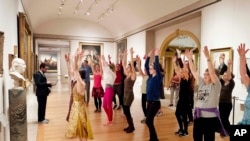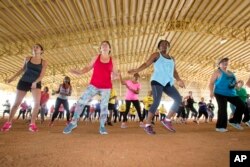One of the largest cancer prevention studies of its kind to date reached a sobering conclusion. Just one alcoholic drink per day can increase the risk of breast cancer in women. But researchers also concluded there are things women can do to decrease their risk of breast cancer.
The study by the American Institute for Cancer Research was a review of 119 prior studies involving 12 million women, 260,000 of who had developed breast cancer.
Lead author Anne McTiernan is a cancer prevention expert at Fred Hutchinson Cancer Research Center in Seattle, Washington.
In 10 of the studies involving 4,000 women of childbearing age who developed breast cancer, McTiernan said investigators uncovered a connection between alcohol consumption and increased risk of breast cancer.
“We found that those women who drank an average of just 10 grams of alcohol a day had a five percent increased risk of breast cancer. So, five percent is a small amount but it was statistically significant so it gives us more confidence that it’s probably real,” said McTiernan. She noted, “Ten grams of alcohol is like a small glass of wine.”
In another subset of studies involving 35,000 post-menopausal women who developed breast cancer, McTiernan said alcohol was found to be a greater risk factor.
According to McTiernan, “We found that there was a nine percent increased risk of drinking that same amount of alcohol, drinking 10 grams per day of alcohol. Again, small glass of wine, eight ounce of beer, one ounce of hard liquor.”
McTiernan said the World Health Organization considers alcohol a carcinogen, or cancer-causing agent. It contains a metabolite called acetaldehyde that is damaging to DNA, according to McTiernan.
Lowering risk
On the positive side, investigators found that vigorous exercise, such running or bicycling fast, decreased the risk of breast cancer in young women by 17 percent and 10 percent in post-menopausal women.
Moderate activity, such as walking and gardening frequently, was found to reduce the risk of breast cancer by 13 percent in the most active women compared to the least active.
There was also evidence too that eating a non-starchy, plant-based diet is beneficial.
“That does not mean becoming a vegetarian,” said McTiernan. “It just means eating a lot of fresh vegetables and fruit. Making sure most of the vegetables are non-starchy, not potatoes. Eating dairy products because they are high in calcium and they have some benefit on their own.”
To the extent that being overweight has been found to increase an older woman's breast cancer risk, McTiernan said eating a diet full of fruits and vegetables can help women keep their weight down.
According to the American Institute for Cancer Research, an organization concerned with cancer prevention, one in three breast cancer cases in the United States could be prevented if women did not drink alcohol, stayed physically active and maintained a healthy weight.
McTiernan said the evidence of "this comprehensive and up-to-date report ... is clear: Having a physically active lifestyle, maintaining a healthy weight throughout life and limiting alcohol, these are all steps women can take to lower their risk" of breast cancer.
The American Institute for Cancer Research is part of the World Cancer Research Fund, which collects and analyzes data from around the world on cancer prevention, drawing conclusions on how attention to weight, diet and exercise can reduce the risk of developing cancer.







